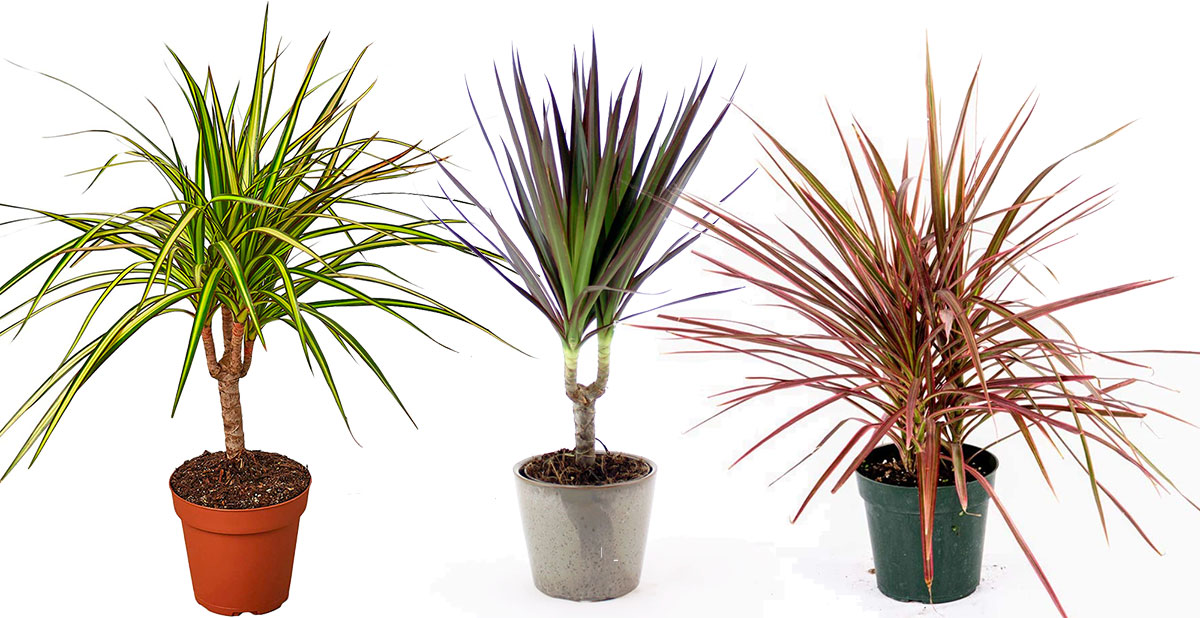When you know what to plant next to this or...
Dracaena Marginata Plant - Growing Guide & Care Tips
Dracaena Marginata is a tree species of the Asparagaceae family. In its historical homeland, the island of Madagascar, it grows 3-5 meters in height.
In indoor or office conditions, Dracaena Marginata reaches a height of 3 meters. This is one of the most unpretentious varieties of dracaena. It differs in the original coloring of the leaves, they are green with a reddish-purple border around the edges. The shape of the leaves is narrow-linear, with a pointed end. Over time, scars from fallen leaves form on the bare tree trunk.
It is noteworthy that the plant has beneficial properties: Dracaena Marginata reduces the content of formaldehyde, trichlorethylene, xylene and other harmful chemicals in the air and humidifies it.
✔ We Released The Dracaena HandBook
CLICK HERE TO LEARN MORE >>
Dracaena Marginata - Plant Care Guide
This type of dracaena is prized by gardeners for its exquisite and exotic beauty. And if you want the flower to delight you for many years, read the rules of maintenance and care features.
Due to its ability to humidify the air, Dracaena Marginata is most often used for indoor decoration. It does not require increased attention to itself, easily tolerates a lack of lighting and irregular watering. These plants can even grow on the north side of the room, but they grow and thrive faster in brighter light. This is the best option for landscaping offices, spacious living rooms, hotels, restaurant halls, and of course apartments.
Despite its durability and unpretentiousness, Dracaena Marginata is very sensitive even to minor damage to leaves. Therefore, try not to move the plant pot once again, but use special support for better stability of the trunk.

Lighting
A bright place with no direct sunlight is perfect for Dracaena Marginata. The plant can grow in partial shade, however, for the good growth of dracaena, a lot of light is needed, especially for variegated forms. If the leaves of the plant become lighter, move the plant closer to the window or compensate for the missing lighting with fluorescent lamps.
In summer, Dracaena Marginata can be taken out on the balcony with shade from direct sunlight.
Temperature
The optimum temperature for keeping Dracaena Marginata in summer is 18-25 °C. If the weather is hotter, increase watering and humidity.
In winter, the temperature in the room should not fall below 15°C.
At an elevated temperature, additional watering should be provided for dracaena. Also, try to protect the plant from cold drafts and frosty air.
Humidity
Dracaena Marginata tolerates dry air, but in this case, it is imperative to regularly spray the plant (1-2 times a day) with water. This will reduce the drying process of the dracaena leaf tips. It will be useful to place the plant pot in a tray filled with damp expanded clay.
Also, a warm shower is useful for Dracaena Marginata in order to wash off the dust from the leaves. Use purified water at room temperature.
Watering
Watering should be neat, Dracaena Marginata should not be overwatered. The soil between waterings should dry out 2-3 cm deep. It is highly recommended to loosen the top layer of soil for aeration at least 1 time per month.
If a salt crust has formed on top, it must be removed and filled with fresh substrate.
In winter, watering should be more moderate, but do not allow the soil to dry out, especially if the heat is on.
Fertilizer
You can feed Dracaena Marginata all year round. However, in the autumn-winter period, feeding should be limited to half the dose once a month.
In summer and spring, from March to September, fertilizing should be done 2 times a month in moist recently watered soil. Use complex fertilizers, alternating organic with mineral or special fertilizers for palms and dracaena.
The flowering of Dracaena Marginata
At home, Dracaena Marginata practically does not bloom. This evergreen shrub is prized for its bright, beautiful leaves.
Repotting
It is better to repot young Dracaena Marginata plants in spring after 1-2 years, adult plants - after 2-3 years. In dracaena in tubs, you need to replace the top layer of the substrate (about 5 cm) with a new one every year.
Use purchased soil for palm trees and dracaena. It is recommended to add to the substrate a little sand and pieces of charcoal (to prevent root diseases), you can also add little small brick chips to make the soil loose.
Good drainage is very important for Dracaena Marginata care; this species does not tolerate excess water.
Cutting and crown formation
Dracaena Marginata is pruned by cutting off the top of the plant. This increases branching and promotes dracaena renewal. You can leave 4-5 leaves on the trunk.
To try to get "candles", put a plastic bag on the cut site to maintain the necessary humidity. If you are lucky, 3-5 lateral buds near the cut site will awaken in about a month. As the fresh shoots grow, remove the bag.
Propagation
The cut off the top of Dracaena Marginata can be used for propagation. The suitable length of the dracaena top for these purposes is 10 - 15 cm. To obtain the roots, the top must be placed in an opaque container with water and pieces of activated carbon. Rooting can also be done directly in soil or sand.
Dracaena Marginata also propagates by stem cuttings 5-7 cm long. To do this, put a 5-7 cm layer of substrate and the same layer of wet sand into the container. Plant stem cutting into the wet sand to a depth of 2 cm. Subsequently, the cutting will take root in the sand, then in the soil, and it will not need to be replanted and the root system will not be injured.
Dracaena Marginata care in winter
The dormant period for dracaena lasts from October to January.
The temperature should not fall below 15 °C. Do not forget to increase humidity periodically if the temperature is higher than permissible standards.
Protect the plant from hypothermia and waterlogging of the soil!
Diseases and pests
With proper care, Dracaena Marginata rarely gets sick. It may be affected by spider mites, aphids, mealybugs. Root decay can occur from over-watering. Sometimes, to help Dracaena Marginata, it is enough to adjust watering and wipe the leaves. In difficult cases, it will be necessary to change the potting mix and treat the roots with a fungicidal solution.
Interesting facts about Dracaena Marginata
In nature, this unique evergreen plant is considered young up to 35 years old, then the fruiting period begins, and its adult age lasts several hundred years. The oldest Dracaena Marginata tree grows on the coast of Tenerife, it is 400 years old and is 17 meters tall.
People of Madagascar make paint for fabrics from Dracaena Marginata sap, varnish for metal coating, and it is also used to treat stomach and skin diseases.
Flowering conditions
- Feeding with fertilizer with a high content of phosphorus and potassium;
- A lot of diffused lighting;
- Watering with warm water.
Dracaena blooms with white small flowers, collected in an umbrella inflorescence. They bloom at night and exude a scent of honey.
Poisonous
Remember that Dracaena Marginata is toxic to both cats and dogs. Do not allow your pets chew the leaves of the plant. It can cause weakness, vomiting and indigestion. At the first signs of poisoning, immediately bring your pet to a veterinarian. See more about pets and the effect toxins have here at the ASPCA.
Features of Dracaena Marginata
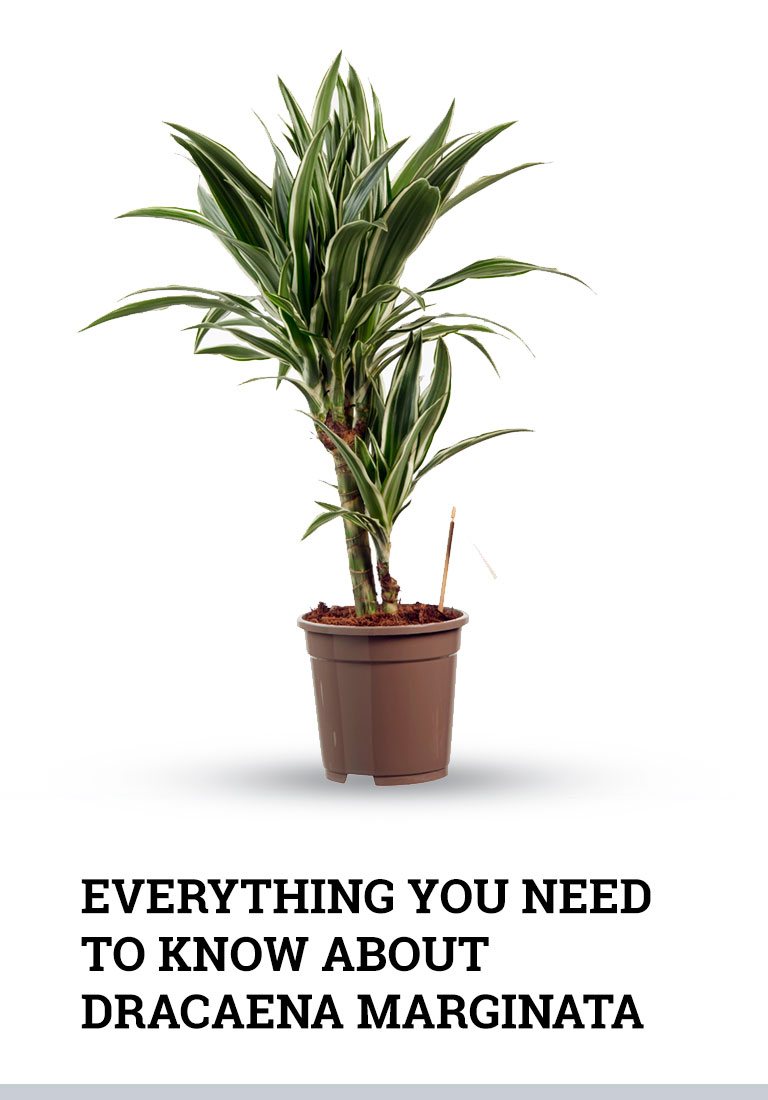
- In summer, when the temperature is above +35 °C, do not feed the plant.
- In autumn/winter period, a decrease in the temperature below the recommended values, in combination with insufficient lighting, leads to a partial fall of foliage.
- Problems arising to Dracaena Marginata from violation of overwatering: If Dracaena Marginata is watered too often, then first of all the foliage begins to fall; further, if the situation is not corrected, the plant dies (first the roots rot, then, starting from the base, the stem begins to rot and soften). If this happens, then the plant can no longer be saved, but you can cut off the panicles (tops) and root them. If dracaena is very rarely watered, then, just as in the first case, part of the foliage first falls off, the color of the leaves fades, the leaves dry up and die off for a considerable length, but the plant itself does not die. If you subsequently restore and maintain the recommended watering frequency, then the dracaena will grow well normally. At the same time, do not fertilize Dracaena Marginata during the recovery period.
- If the plant is stretched and twisted, this can be corrected: from April to August, cut off the shoots, removing all previous growth. After 3-4 weeks, 1-3 cm below the cut site, new kidneys will wake up.
- If the dracaena leaves are dirty, wipe them with a damp soft cloth. It is not worth using chemical polishes to remove dirt, as the leaves turn yellow after them.
- With insufficient lighting, the intensity of dracaena growth decreases, red colors disappear from the leaves of the plant, the leaves become completely green; partial foliage is also possible.
- When choosing a place for the plant in a room, keep in mind that its foliage should not touch other plants, walls, and interior items.
- Extensive brown spots on the leaves in spring/summer indicate that the plant has received a sunburn - it is necessary to reduce the light intensity.
- Before repotting, do not use fertilizer for a month, and after that also wait until the plant acclimatizes.
- If the seedlings are planted in soil, keep it warm and moist, and when the seedlings try to root in water, change it every day and make sure that the water is not cold. After the required number of roots has appeared, put the plants in a potting mix.
- If the new foliage is growing very small, there is almost certainly too little light in the room. When it simply falls off for a few weeks, this is not a sign that the tree is dying, in fact, it is a normal process. But when unhealthy yellowness appears, perhaps watering is not done often enough.
- A soft stem, on the other hand, reflects too much moisture that has entered the plant, or that it has suffered from exposure to cold temperatures. If this happened, then the tree is probably already dead. If the crown is still intact, you can try cutting it off and rooting it.
Dracaena Marginata Varieties
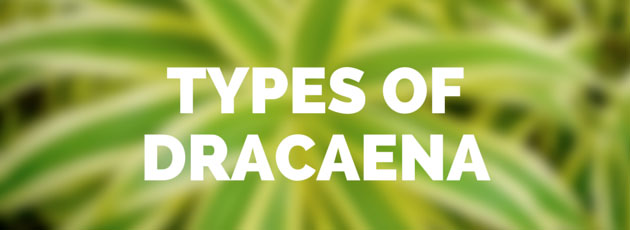
This plant remains quite slender and tall even after many years of growth and always looks great. Its branches are stiff and strong, so they can perfectly hold without additional supports. Dracaena Marginata is one of the cheapest indoor plants and the easiest to care for.
- Bicolor. A great solution that will help to green up an enclosed space, even if there is little sunlight inside. The plant absorbs harmful substances, which is important in offices where a lot of technology works. The tree takes on a particularly attractive appearance when it becomes an adult plant. On average, each leaf stays on the trunk for two years, then it falls off. Those that remain on top form a spreading crown. Over the years, Bicolor Dracaena Marginata rises up and at the age of five, it becomes very similar to a palm tree. On average, the height of this type of Dracaena Marginata can be up to 2.5 meters. The color of the leaves is green, the edges are red.
- Tricolor. The same tree as the original, but it has three colors on the leaves. A stripe of yellow tint separates the light green edges from the red tint. From the outside, it seems that the plant is greenish-gold.
- Colorama. A new variety that grows more slowly than the original one. It has the same tricolor on the leaves, except for the red stripe around the edges, which is more visible, so the leaves appear to be red or pinkish.
- Tarzan. The leaves of this species of Dracaena Marginata are the same color as the original, but they are slightly stiffer, wider, and thicker. At the very top of each stem, there are spiky balls that look like the end of a dragon's tail. New leaves emerge from the crown and initially point upward.
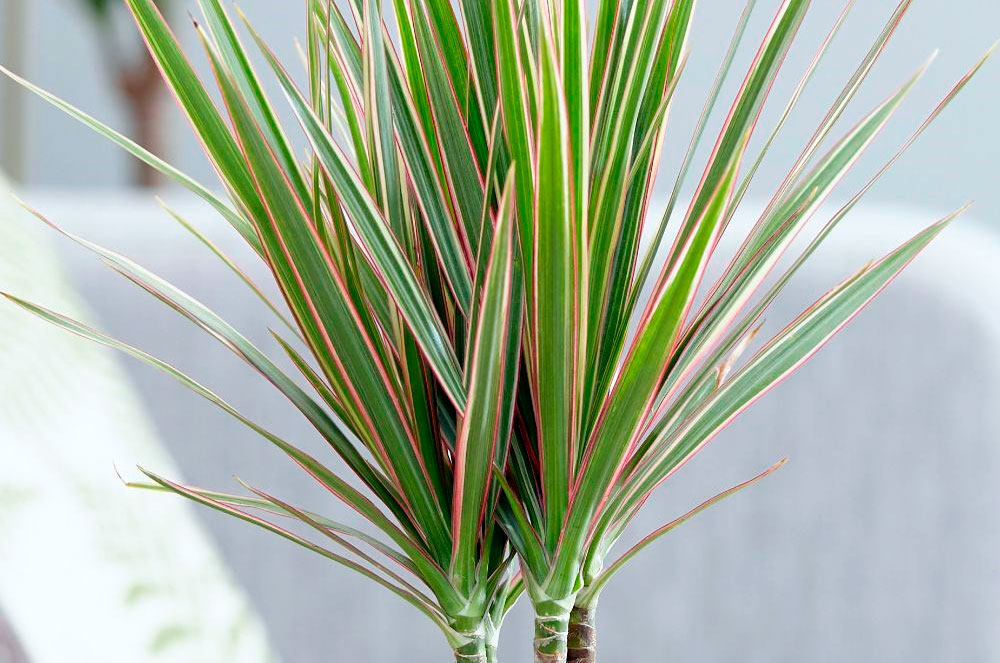
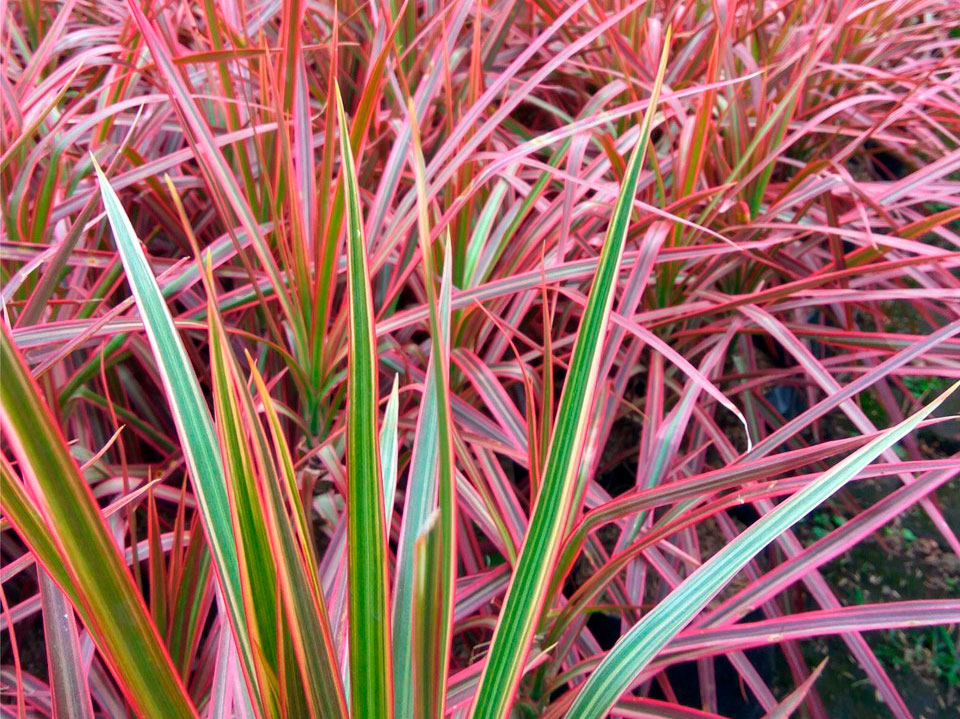
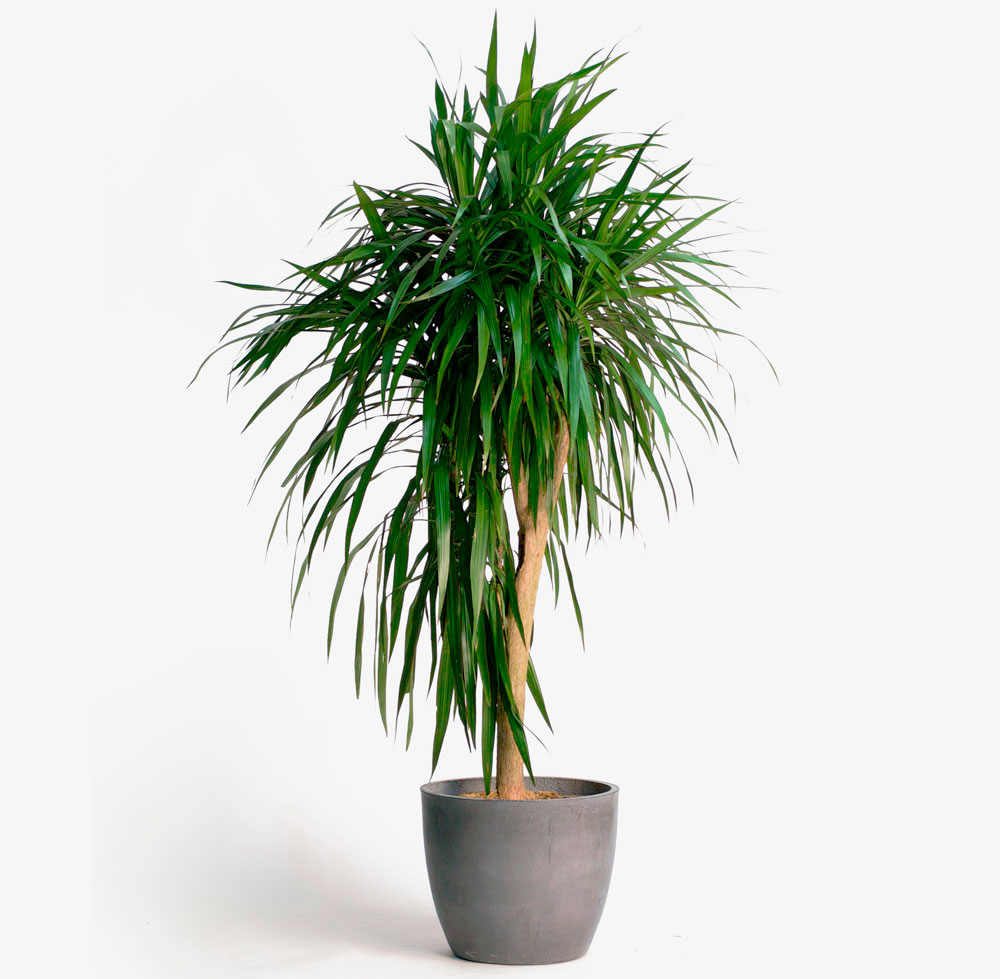
The Main Problems When Growing Dracaena Marginata

- Dry leaf tips - dry air, low room temperature.
- Leaves fall down - cold or rotting of the root system.
- Dracaena does not grow - there is no fertilizer, there is not enough drainage and air in the soil.
- Leaves at the top of the plant are rotting - excess moisture, low air temperature, lack of fresh air, and light in the room.
- Leaves are dull - the plant has been exposed to cold temperatures for a long time.
- Black spots have appeared on the leaves - a sign of sunburn.
- Young leaves dry up and turn black - too much fertilizer, untimely transplantation.
FAQs about Dracaena Marginata
Why do the leaves of Dracaena Marginata become dry?
If the lower leaves dry up and the plant sheds them, this is the natural aging of the foliage. If the tips of the leaves dry out, it indicates that the air is dry.
When does it bloom?
Dracaena will bloom with regular mineral fertilizing and proper care.
Why do the leaves of Dracaena Marginata turn black? This indicates that the plant has problems with the root system. Therefore, it dries out excess leaves. To help your dracaena, cut it and put it in water to build up the root mass.
Is it possible to plant 2-3 Dracaena Marginata plants of different lengths in one container?
It is possible, but at the same time, the plants will look beautiful if they are of different height, as if the tops are at the same height, they will oppress each other.
Dracaena Marginata is a very popular and beautiful plant that does not require much attention and care, while beautifully decorating the interior. A little attention and love of a florist - and the plant will feel like in her homeland, growing the branches well and quickly and delighting everyone around.
DRACAENA MARGINATA INFOGRAPHIC THAT SHOWS YOU EXACTLY HOW TO TAKE CARE OF YOUR PLANT

This infographic was made by Tipsplants team.
About the Author
My name is Michael Bauer, I have been growing and taking care of plants for 20 years. My dream has become a reality. I've had many difficulties along the way, but my love for our favorite plants has really helped me.So join us!







